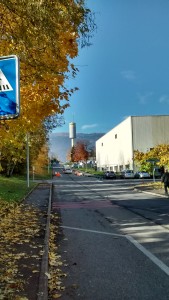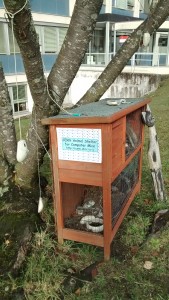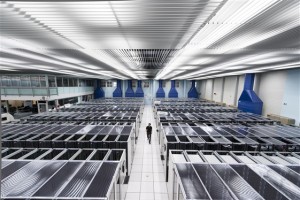 by David Lugmayer
by David Lugmayer
Science can be complex. Even with a lifetime spent studying the sciences one could still not learn everything it has to offer. Yet much of this knowledge can be very important to our lives, whoever we are and whatever occupation we have: This is why we need science communication and is one of the reasons I decided to embark on the Science, Communication and Society MSc program at the University of Kent.
Shortly after I handed in my final dissertation, I became aware of an offer for an internship at CERN in Switzerland. “CERN! That would be a fantastic place to work wouldn’t it?” I thought to myself. But this wasn’t some sort of pipe dream. This, I found, was something I could do: my Science communication course had given me the confidence, the skills and the experience I needed to do this internship. It also involved me writing informative (but easy going) articles, which happened to have been my favourite part of the MSc course. To my delight the application to the internship was accepted, and having recently returned from CERN I feel it went rather well (even if I do say so myself)!
After making the necessary preparations I travelled to CERN (which straddles the Franco/Swiss border) where I would be working for the next two months. The region around CERN has some truly stunning scenery – being nestled between the Swiss Alps and the French sub-alpine mountain range called the Jura, and next to the beautiful city of Geneva and its lake. CERN (which formerly stood for Conseil Européen pour la Recherche Nucléaire but is now called the European Organization for Nuclear Research) is the world’s most eminent organisation for high energy physics research, and is the largest particle physics laboratory in the world. It houses the Large Hadron Collider (LHC) which is comprised of a huge circular tunnel 27km in circumference that runs deep underground; as it happens, the tunnel runs right under the accommodation I was staying in during the internship. The LHC is a particle accelerator that collides two high energy beams of particles travelling close to the speed of light to help answer some important questions, such as the existence of a particle called the ‘Higgs Boson’.

However my role at CERN was not to be directly involved with the physics experiments being conducted. So on a surprisingly mild morning I found myself in an office at CERN’s IT department. My job was to write feature articles for a website called Science Node; which is a joint USA/European hosted website. The website reports on the types of research that has been made available by the use of such things as supercomputing, grid computing, and other forms of high performance computing. It also covers new developments regarding tech trends, the technology community, research networks, and big data. If you are interested in topics such as these, or information technology and science in general, I would highly recommend checking the site out. But, as I soon found out, the site is about much more than this, because some of the research that high performance computing enables is as far removed from the world of IT as you can get.
To write these articles I first had to source some of the weird and wonderful research that relies on these computing technologies. The topics of these articles could encompass almost anything- from unlocking the secrets of photosynthesis, to an amazing project by a school in Canterbury involving a satellite and the youngest ever person to be allowed to use high powered ‘grid’ computing. Once I knew what I would be writing I got into contact with some of the individuals involved, contacting people from all corners of the globe to ask them more about what they had been doing. The purpose of these articles was itself a form of science communication: The site exists to show the world how these advanced computing technologies have affected not just the world of IT, but also the progress of scientific research and understanding.
On the face of it CERN might seem an odd place to work for someone writing articles on a website that is primarily about advanced computing – a subject that falls squarely into the realms of IT. But aside from practical reasons (CERN is one of the sites funding partners) it is actually a very fitting location to host the website. The facility also acts as the main hub for the Worldwide LHC Computing Grid (WLCG): an international grid of over 170 computing centres spread across 42 countries. This vast network of computers is used to process the enormous amounts of information that the experiments produce. My office was in fact located in the building that housed the central datacentre at the heart of the WLCG! There are also other historical reasons that entwine CERN and the world of computing: CERN was the location where Tim Berners-Lee developed the World Wide Web, and published the first ever website.

CERN’s data centre
CERN has always been about spreading knowledge. In 1953, the ‘CERN Convention’ was signed, which stated that research conducted there would not be concerned with military requirements, and all its results should be made public. On reflection of the time spent on the internship I came to realise the parallels between the communication of science and the role advanced computing plays at CERN. In the same way that the WLCG boils down the mountains of data produced by the LHC into information that can be used and discussed, science communication plays the role of filtering down the fruits of scientific endeavour into a form that can be consumed and manipulated by everyone.

1 comment
I intern in the Science Node offices in the US at Indiana University, and I feel the same way. Looking up cool research and promoting peoples’ awesome ideas is a wonderful way to spend the day. I haven’t explored to see the Big Red II supercomputer over here, but I hear she’s beautiful. It’s so rewarding to be in a place that’s main goal is to support researchers through sharing their discoveries.